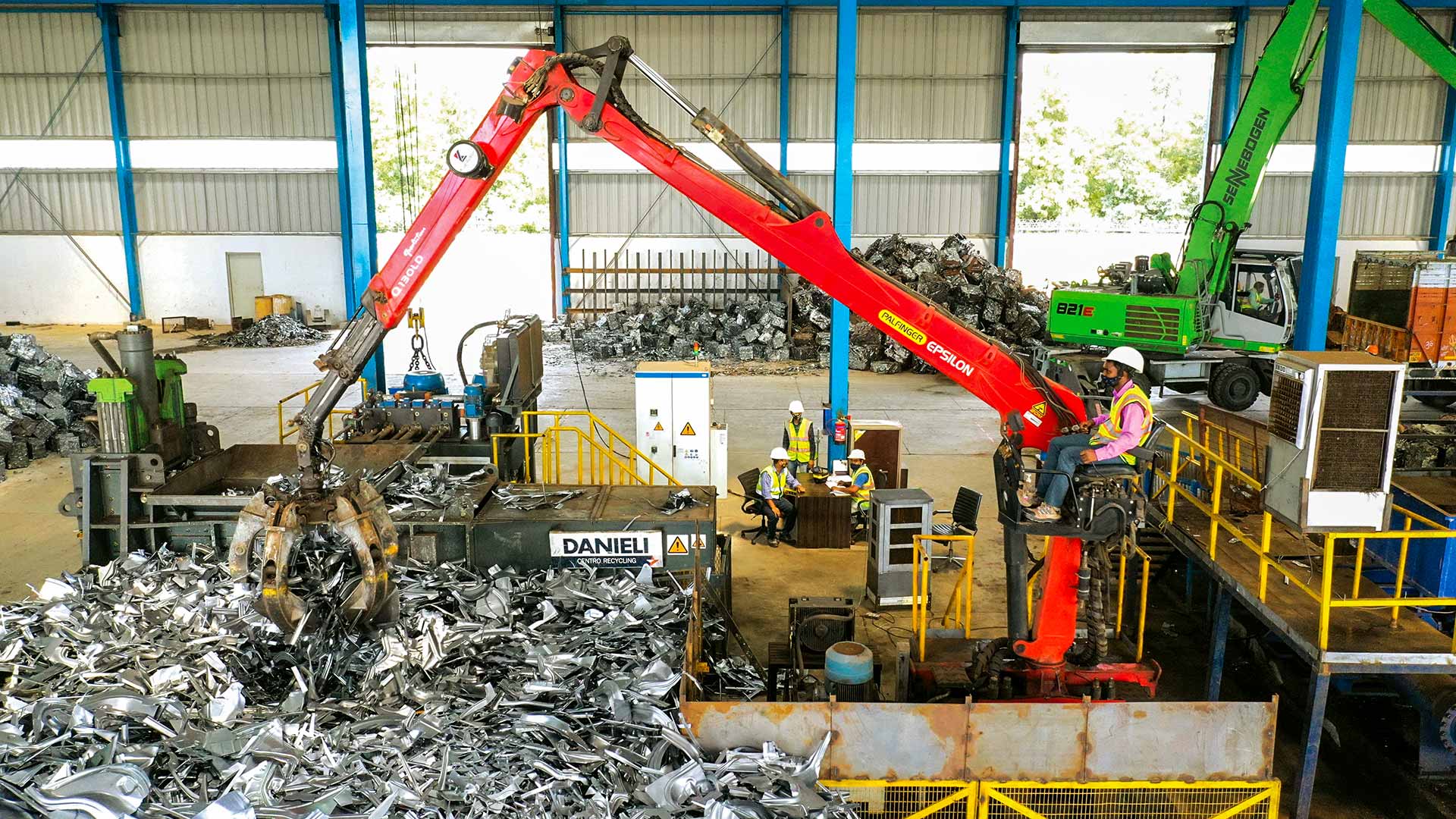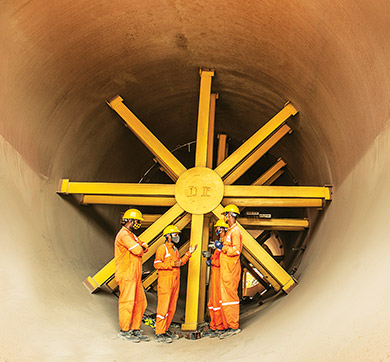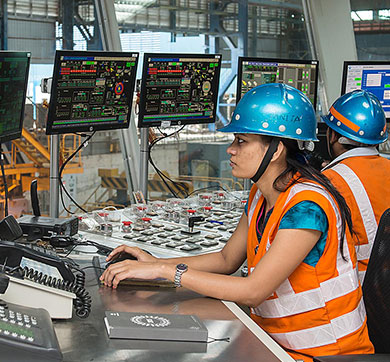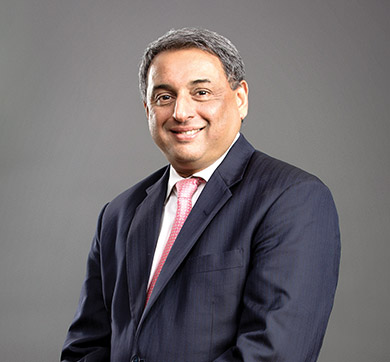August 2022 | 1390 words | 5-minute read
Contrary to popular belief, it isn’t diamonds that are forever; steel is! Steel is 100 percent recyclable and can be recycled infinitely without losing its properties, making it a perfect circular material.
As natural resources become scarce with consumption, responsible corporations acknowledge the need to reuse, repurpose and recycle their resources. Tata Steel has always believed in its role as a corporate citizen and is committed to its responsibility towards the people and planet. The setting up of the Steel Recycling Business (SRB) is a definitive step towards sustainable steel production. Tata Steel plans its expansion in long products through the electric arc furnace route (EAF) which uses scrap as the primary raw material, thereby reducing the burden on natural resources.
The growing concern around carbon emissions and the focus on carbon neutrality has influenced the company’s decision to take concrete steps towards this initiative. Yogesh Bedi, chief, Urban Mining and Steel Recycling Business, says, “Most developed countries are promoting the EAF route of steelmaking, through the recycling of scrap.” EAFs lower carbon emissions by more than 60 percent as against the blast furnace route of steelmaking.
Tata Steel set up its first state-of-the-art steel recycling plant of 0.5 MnTPA (million tonnes per annum) in Rohtak, Haryana. Prior to setting up the plant, the SRB team visited various overseas facilities to understand the trends, assimilate industry best practices and identify the most suitable technology for adoption in the Indian scenario. This robust preparatory effort played its part in the creation of a plant that is comparable to the best in the world, with mechanised equipment like balers, shredders, and material handlers. The products are best-in-class and have received significant traction from the market.
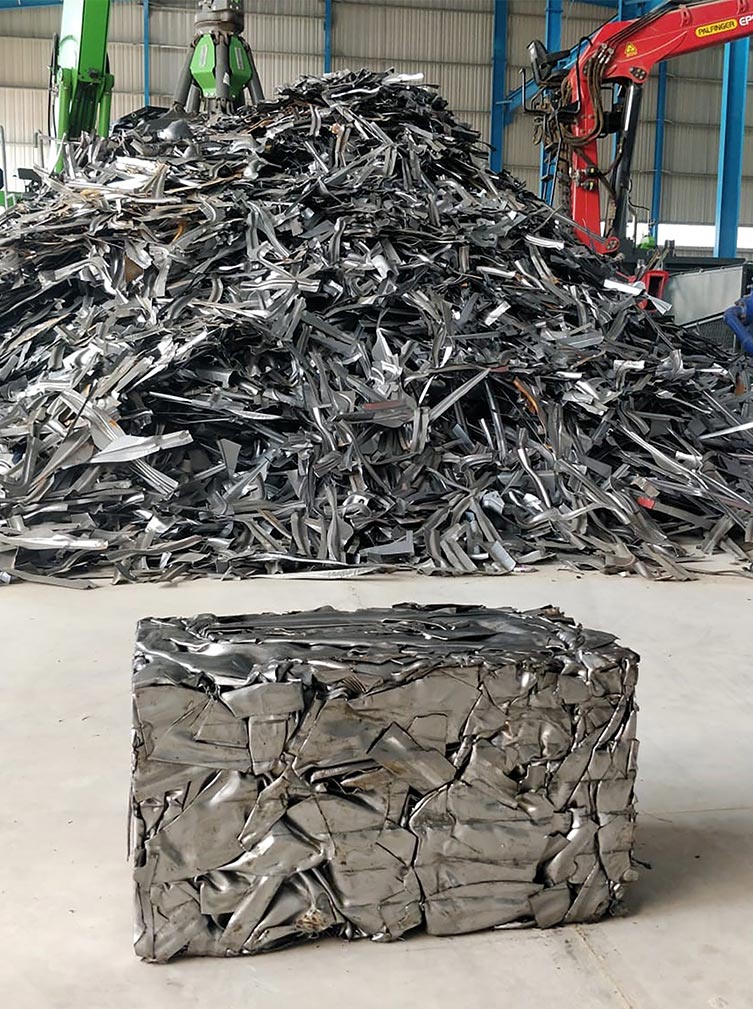
Urban mining of scrap
The collection and aggregation of scrap for the recycling plant entails reverse logistics. Tata Steel has leveraged the power of digital to set up robust supply chains. The company launched FerroHaat, a digital app, to source steel scrap from the scrapyards. The app has enabled deep penetration into the value chain and fostered transparency and ease of doing business in a hitherto trust deficit sector.
The company released a multipronged communication campaign, leveraging its presence on social media platforms, to share information about the app. For example, QR codes were displayed on trucks transporting scrap and other goods. Scrapyard owners could scan the QR code, download the app, and evince interest to partner with Tata Steel.
In the backend, Tata Steel conducts a thorough due diligence of prospective suppliers, before a formal sign up. Mr Bedi says, “We do a background check and onboard vendors who have a cultural fit with the Tata values. They should score on governance, statutory compliances and market reputation.” More than 180 suppliers have been registered on the app, giving the company a reach of over 70 percent in the National Capital Region.
After onboarding, a vendor can start transacting business of scrap supply to SRB. The scrap is processed at the plant to improve its quality. The value-added scrap is supplied to the market and to Tata Steel's plants in Jharkhand and Odisha.
Tata Steel’s plants at Jamshedpur, Kalinganagar and Meramandali manufacture steel using blast furnace-basic oxygen furnace (BF-BoF). Even though these furnaces use iron ore and coal as the principal raw materials, they also use scrap charge up to 5 percent. With a view to making the operations more sustainable, Tata Steel is planning to increase the scrap charge to 15 percent.
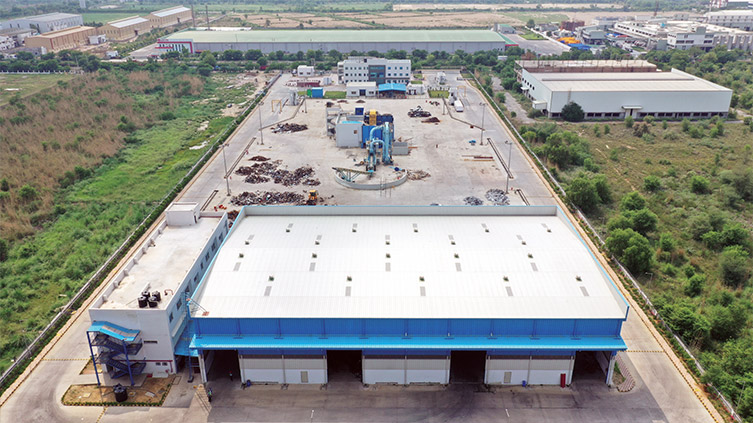
Revitalising an industry
The scrap is procured from various market segments such as end-of-life vehicle scrap, obsolete household scrap, construction and demolition scrap, industrial scrap, etc. This scrap is processed using mechanised equipment. The high-quality processed scrap is supplied to EAFs, induction furnaces (IFs) and foundries for downstream steelmaking, thus fulfilling their long-standing demand.
“Scrap recycling is an inclusive initiative as Tata Steel works with the players who are already part of the industry and endeavours to improve their safety, health and environment conditions,” says Mr Bedi. Over a million people are working in the scrap recycling sector, with no social security, and their operations are fraught with safety and environmental concerns. Despite its size and scale, the sector is not considered an industry and lacks a robust governance framework.
The supply chain starts with the kabaadiwalas who collect scrap material from households, and then segregate it into different categories, namely steel and iron scrap, glass, paper, plastic, rubber, etc and sell it to the aggregators of that respective category. The aggregators sell onward to a scrapyard where traders pick up the scrap and sell it it to EAFs or IFs.
With multiple levels in the long and complex supply chain, the costs keep adding without any value addition to the scrap.
An urgent need was felt to formalise the scrap collection sector in the country and streamline the collection process, to ensure a steady pipeline of value-added scrap for the furnaces. But the challenges were many. The unorganised players had minimal consciousness of quality, safety, health, environment, and governance. Unethical business practices abounded, with no national policy or framework to govern the industry.
SRB has raised the bar. Its efforts are enabling the steel industry to have access to quality processed ferrous scrap. Tata Steel has launched two brands, Tata FerroBaled and Tata FerroShred, which have significantly lowered the dependence on scrap import, thereby saving valuable foreign exchange and warding off the risk of currency fluctuations.
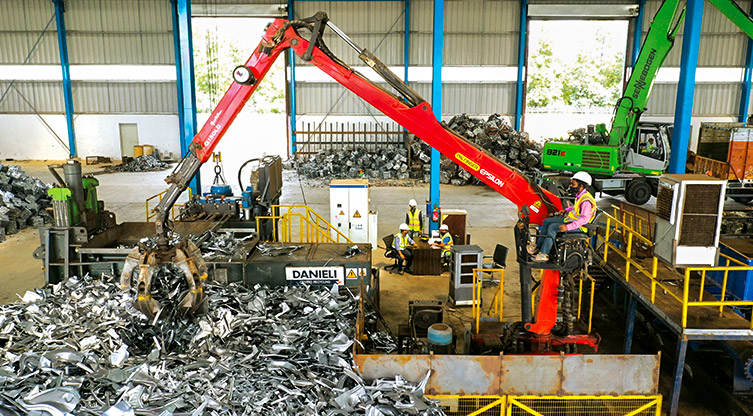
Valuable scrap
The worth of SRB’s offering lies in the value addition it brings about. Scrap, by its very nature, is heterogenous and voluminous; it contains impurities like dust, paint, rust, plastic, rubber, and wood, resulting in poor quality scrap. Scrap processing removes the contaminants, yielding quality processed ferrous scrap, a homogenised, cleaner scrap of high bulk density and high ferrous content, which are significant value propositions of processed scrap. They increase the yield and productivity of the furnace while lowering conversion costs and logistics costs.
India is a scrap-deficit nation, but as the economy matures, more scrap will be available for recycling. Old infrastructure projects will get dismantled and old automobiles and consumer appliances will become obsolete and need to be discarded. The availability of scrap for recycling will pave the way for sustainable steel production through the EAF route of steelmaking.
India needs about 30 MnT of scrap, but we are generating only 25 MnT. The rest has to be imported from the US and Europe, where there is a surplus. Imports bring in their own challenges, including volatile prices, irregular supplies, and loss of foreign exchange.
The global scrap dynamics is, however, changing. Sustainability considerations are driving more and more countries to transition to the EAF route of steelmaking, using scrap as the prime raw material. With time, countries are likely to be reluctant to export scrap and would like to retain scrap for value addition in their own countries.
One Tata
SRB is working with several Tata companies in the pursuit of its goals. Tata Consultancy Services served as the technology partner for the development of the FerroHaat app. Vistara’s dynamic pricing model was used as a reference to design the pricing approach for buying and selling scrap; Tata Strategic Management Group supported SRB in designing its business model. Tata Motors is setting up dismantling centres for end-of-life vehicles (ELVs) in line with the Vehicle Scrappage Policy and the scrap will be supplied to SRB’s processing unit.
Forging ahead
SRB’s foray into steel recycling has given it a leadership pedestal in India on sustainability. As per the National Steel Policy, India’s steel production capacity is likely to reach 300 MnTPA by 2030. About 35-40 percent of this capacity is expected to come from the EAF/IF route where scrap is the primary raw material. The use of scrap is also being increased in the BF-BoF route.
SRB plans to set up 8-10 fully mechanised scrap processing facilities with a combined capacity of 5 MnTPA by 2030. Currently, the output from the Rohtak plant is 0.5 MnTPA.
As SRB chalks up plans for strategic growth, it is also working towards creating awareness of the benefits of recycling, promoting and incentivising scrap recycling and streamlining supply chains. It is also supporting government policies, including the Steel Scrap Recycling Policy and the Vehicle Scrappage Policy, which are critical to the development of the recycling ecosystem, and working closely with the government and industry bodies.
SRB is a green step in the right direction.
—Cynthia Rodrigues




